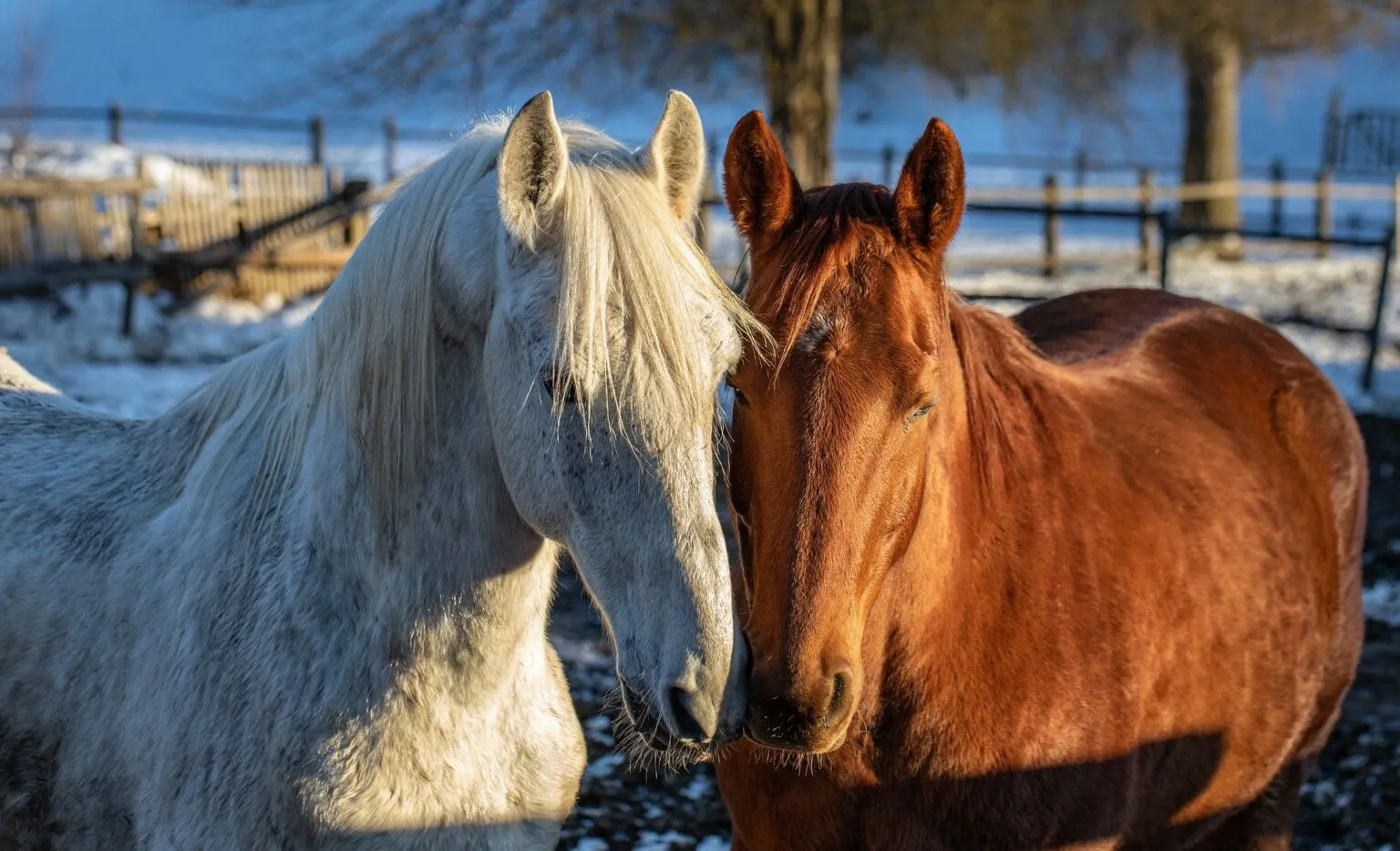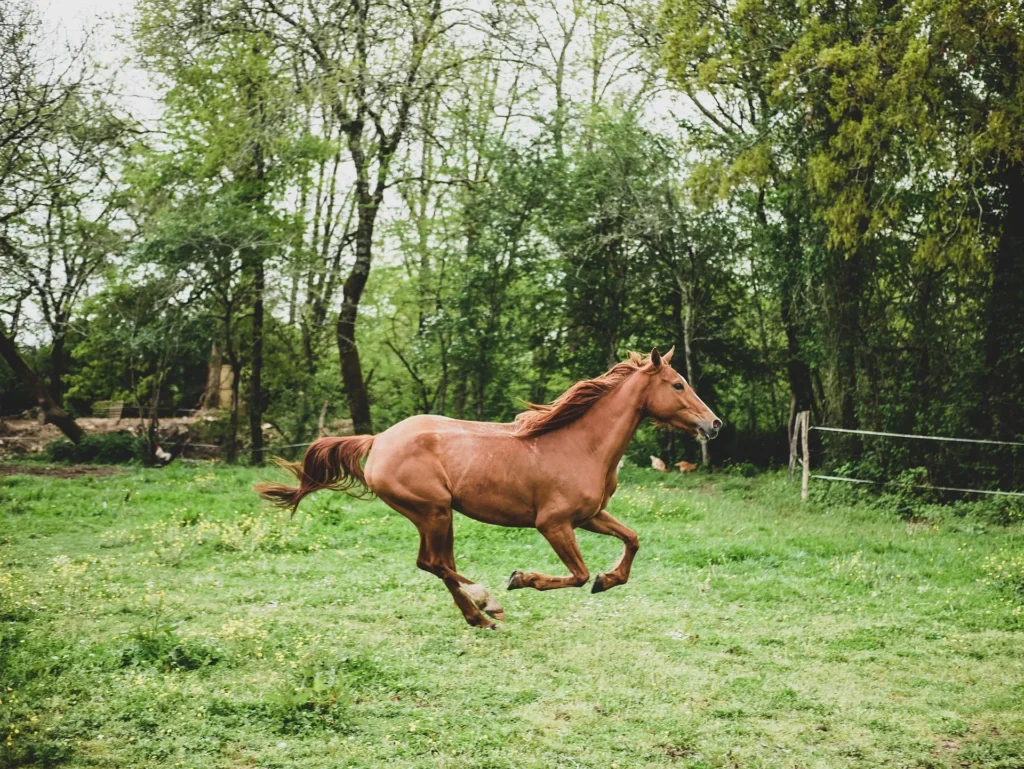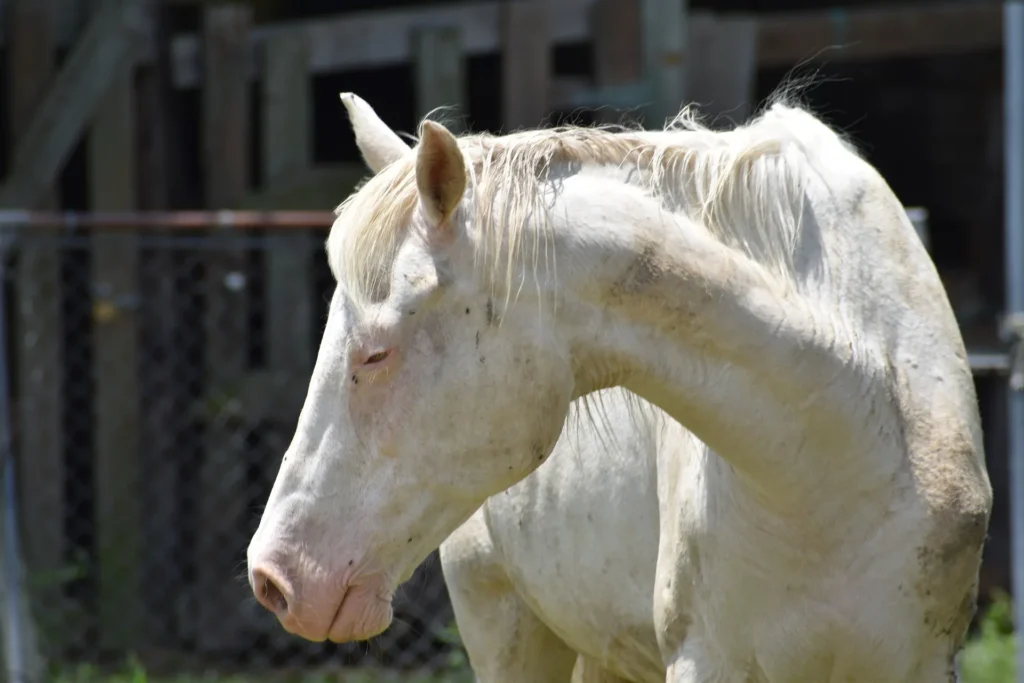Menu

When the horse loses weight, most of us react by increasing its manger feed or going online and purchasing the "best" supplement for thin horses. These can indeed be excellent products. Most feed companies in Denmark are responsible and want to deliver quality. You may even speak with one of the consultants to get qualified advice. However, the consultant can only assess based on what you tell them, so the quality of the advice depends on how well you understand the horse's issues.
In this article, you will get the horse agronomist's explanations of the problem "the thin horse" and three strategies you can choose to follow.
This means that the horse's body cells cannot get enough energy nutrients for the combustion that must take place in the cells. The combustion creates energy for the biochemical processes, which, in the bigger picture, make the horse's body function. The concept of energy is thus the result of a combustion process, just like the heat from a wood stove. The energy balance tells whether the horse is gaining or losing weight. The cells obtain the nutrients they need from the blood. If there is an excess of energy nutrients in the blood, especially glucose, the hormone insulin will draw the surplus into the fat tissues, so the blood's balance can be maintained. If there is a lack of glucose in the blood, other hormones will take over to mobilise glucose for the brain and internal organs. These have top priority, and therefore the horse will also lose muscles during the weight loss process, causing the horse's body weight to decrease and thus the total energy requirement. When we are faced with a thin horse, it often lacks both fat and muscle tissue.
Read also: Body awareness: The best way to proper posture and impact
Find an explanation for the weight loss
It may be too easy to say, but we should ensure year-round that the horse never becomes too fat or too thin. Sometimes, however, reality overtakes us. The causes of energy deficiency can be many. Therefore, it is important that you find an explanation before you start adjusting the feeding plan. For example, you can investigate:
• The energy content of the feeding plan does not cover the horse's needs
• Age: The horse's digestion and body cell work are not as efficient as before
• Dental problems: poor teeth impair the digestion of feed
• Illness: The horse goes off feed while the body needs energy for the healing process
• Parasites, intestinal worms

Read also (sponsored content): Many cases of laminitis: How to deal with and prevent it
When the horse's feed is increased so it can gain weight, you should focus on two things:
• Starch and sugar
• Fat and fibre
If you increase the horse's feed with a high content of starch and sugar, the blood sugar concentration (glucose) in the blood will increase. Increased insulin to store glucose can also strain the system, especially if the horse has been genuinely starved. This is partly because the cells in the starvation process have trained fat burning and should be slowly prepared to burn glucose again. Therefore, you should provide the fuel the cells are used to, namely fatty acids from the digestion of fat and fibre.

Body fat has important functions for the horse. As you can see in the table about nutrients, fat tissue is primarily a depot for energy that the horse can draw on if it cannot get enough nutrients in the feed. However, fat tissue also has other functions, such as a depot for fat-soluble vitamins, protecting the horse from cold and protecting organs from shocks and blows.
When we assess the horse's fat stores, many places in scientific work have chosen to use Don Henneke's fat scale, which ranges from 1-9. You can see images of selected body condition scores below, and in the references, you can find the original article on body condition assessment. The body condition scoring system involves assessing the horse's fat stores at specific locations on the body, particularly the topline and ribs. The ideal thinness of a horse depends on the country it lives in and what it does.
A horse in Ethiopia working hard in a hot climate can be in body condition score 3-4 and be considered healthy, while a horse with the same score in Denmark would be considered too thin. In the tropics, it can be advantageous for a horse to be thin, as it can more easily dissipate heat from work. In Denmark, on the other hand, it can be a problem for a horse to retain heat when it lacks insulating subcutaneous fat. In our country, we consider body condition score 5 as the norm, but there are also variations related to the horse's type, use, etc.

When discussing the importance of a horse's body condition, we must distinguish between its impact on the horse's health and its ability to perform. We should differentiate between horses that are just a little thin/slender (body condition score 4), horses that are thin (body condition score 3), and horses that are emaciated (body condition score 1-2). In common for all three groups, you must first identify the cause of the weight loss; sometimes, you may need a veterinarian to treat any diseases in time. Once that part is in place, you can work to get the horse back to a normal body condition.

Slightly lean across the back. You can faintly distinguish the last ribs. You can feel a bit of fat around the tail head and over the shoulder and neck. The hip corners are nicely rounded.
Body condition score 4 is a normal score, and if the horse is not sick, it is not alarming. The horse has a thin layer of fat, meaning it has reserves but not heavy dead weight that hinders its movements. Studies have shown that endurance horses complete distances faster if they are in body condition score 4.4 than in 4.8, but when they fall below body condition score 4, it hinders their performance and chances of completing the race. There is also a difference between a horse that maintains its weight at body condition score 4.5 but is otherwise fully covered by other nutrients, and a horse that is losing weight because it is simply not getting enough food. The latter will often also lack muscle because it will mobilize muscle tissue during the starvation phase.
But why is it losing weight – if you haven't changed its food? You need to find out. Maybe the horse is sick, it is old and its digestion is wearing out, the winter has suddenly become colder than you expected, or the hay does not contain as much nutrition as you thought? And once the horse starts losing weight, it is a negative spiral that accelerates, especially if it is cold like in February.
Breeding mares in body condition score 4 can have problems with estrus and the chance of new pregnancies, so it is essential to get the mare back in good condition. However, in the last three months of pregnancy, you should not regulate the mare's body condition score, as all the mare's nutrition goes to the foal and colostrum production. If you have such a mare, be prepared with the right food when she has foaled.
Read also: Fashion, design & lifestyle: Get The Galop is taking the equestrian design world by storm
Foals, on the other hand, may be kept in body condition score 4 if they are otherwise covered with other nutrients and are shiny in their coats. Studies show that they become more durable than if they are fed too strong during growth.
You must therefore distinguish between whether the horse needs more energy in its feed and ensure that it is covered with proteins, fatty acids, minerals, and vitamins. And you should not just blindly buy extra concentrate feed, muscle-building supplements without having control over how the horse is covered by its roughage. We often see that hay has a high sugar content and low protein content in some years, while in other years it is the opposite.
If you blindly increase both hay and protein-rich supplementary feed in a year with high sugar content, you achieve increased sugar intake and possibly risk issues with insulin and blood sugar balance while the horse struggles with a protein surplus. Horses are usually tolerant of protein surplus, but when they have to break down large amounts of protein, it costs energy, which they take from the feed they should have gained weight from. Additionally, it burdens both the liver and kidneys. Protein can only be involved in energy metabolism by the liver converting it to fatty acids and urea. The latter is excreted in the kidneys, and increased urine in the bedding harms the environment in the stable. So if the horse continues to lose weight, the details of the feed plan concerning the horse's needs must be managed.

Thin layer of fat over the bones. You can easily feel the ribs, and some may be immediately visible. The hip corners are slightly rounded but clearly noticeable to the touch. The withers, shoulder, and neck are prominent.
This horse has almost no more fat in its reserves. This means that it has difficulty performing in the riding arena, even if it otherwise gets its feed because it does not have sufficient energy reserves. It can also typically lack muscle mass, which further hinders its performance. With the lack of adipose tissue, there is also a health risk as the horse will be deficient in essential vitamins and fatty acids for immune function and hormone function. Thus, the horse will be more susceptible to infection and heal more slowly after injuries. In this case, you should consult with a veterinarian to check if there are other things wrong before going to the feed store.
It is crucial to look at your roughage. It should be feed with high digestibility, so you should have an analysis of the feed. Horses should gain weight on fat and fiber, especially the digestible fibers from beets. Oilseeds like flaxseed provide both essential fatty acids and energy supplements. If you cannot find hay with high digestibility – or it is practically difficult with more thriving horses in the herd – you can enrich the horse's feed with green pellets and beet pulp or other types of feed with a high content of beet fibers. Remember to soak both green pellets and beet pulp in plenty of water. In this, you can also add oil and extra vitamins and minerals. A good pasture is also an excellent helper for the thin horse. Create a good feed plan in collaboration with your feed consultant.
Read also: Poles & Cones – Creating variation in the daily training

The horse is emaciated. There is only a very thin layer of fat over the bones of the back, which are prominent. The ribs are visible and clearly felt. In body condition score 1, there is no fat, and all bones can be clearly seen and felt.
Fortunately, we rarely see these body condition levels in Denmark, and when we do, it is often a result of illness – in the owner or the horse. Many cases of neglect are often due to the owner no longer being able to manage the situation, and sadly, the horses suffer as a result. Severe illness in the horse can also starve it, making it look like a living skeleton.
In both situations, it is not something you just tackle with a lot of feed. You must look at the background of the situation, how long it has been going on, and how bad it is with the horse. It is often seen that such horses do not make it, so you should work with your veterinarian to make a plan on how to slowly and steadily get the horse back on track – if the veterinarian believes the prognosis is good.
Some of the feeding tools here can be high-quality and easily digestible hay, which the horse is given in small portions throughout the day, tailored to its situation. Green pellets, beet pulp, etc., with oil in them can be introduced when the horse is ready. The best advice here is good collaboration between the horse owner/caretaker, veterinarian, and feed consultant.
Geor, R., P. Harris & M. Coeneen (red.): Equine Applied and Clinical Nutrition, Elsevier, 2016, s. 398-511
Henneke, DR; Potter, GD; Kreider, JL; Yeates, BF (October 1983). “Relationship between condition score, physical measurements and body fat percentage in mares”. Equine Veterinary Journal. 15 (4): 371–2. doi:10.1111/j.2042-3306.1983.tb01826.x. PMID6641685.